Profile: Al Pacino
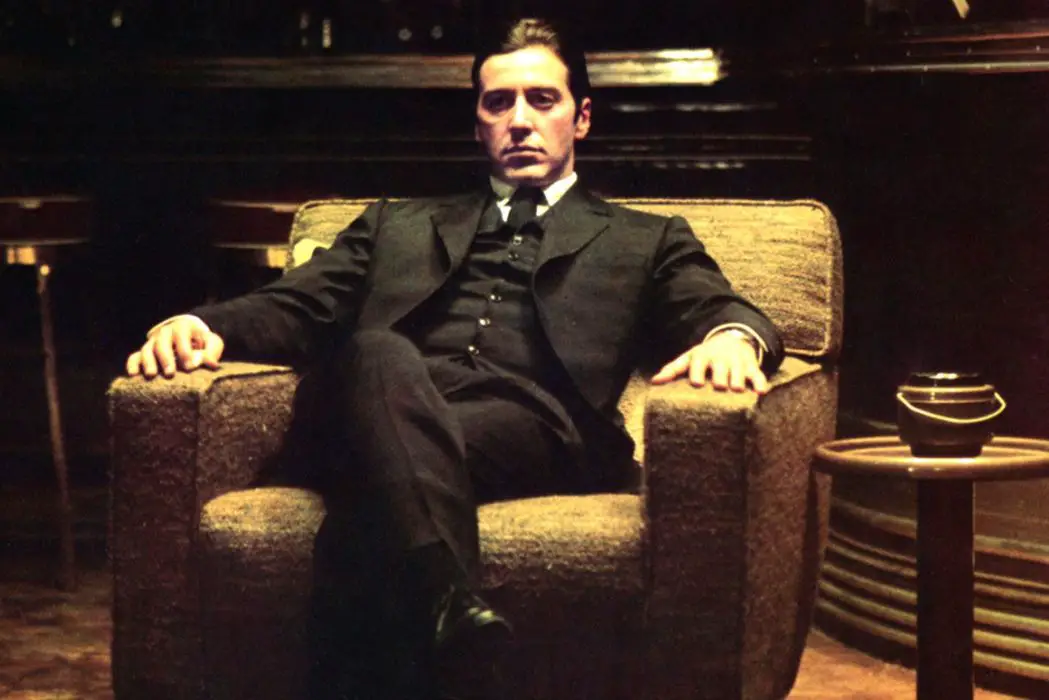
Michelle Sabato is an actor and writer from Cleveland, Ohio.…
The 20th century gifted us with many groundbreaking inventions in regards to film and television. When it comes to acting, in particular, the nineteen seventies shifted the landscape of acting on camera. The performances were more raw and gritty and the actors began to start looking like familiar faces, not just typical movie stars. One of the many icons to emerge out of the seventies was none other than Al Pacino.
Pacino grew up in the South Bronx with his mother and maternal grandparents. He was a shy child at school but would put on performances for his relatives and their friends. Short in stature but with a booming voice, Pacino began his career in the New York theatre and was trained by Lee Strasberg at the Actors Studio and Charles Laughton at the Herbert Berghof Studio. In 1968 Pacino was part of the play It’s Called the Sugar Plum along with John Cazale. Pacino won an Obie Award and received the attention of Martin Bregman, who became Pacino’s agent. It was Bregman who began submitting Pacino for more roles in film, including the film that would change his life forever, The Godfather.
The Godfather (1972)
The role of Michael Corleone in The Godfather launched Al Pacino’s career, but he came very close to being fired from this role. Director Francis Ford Coppola was insistent on having Pacino play the central character; however the executives at Paramount were not impressed. Pacino was an unknown at the time and didn’t have a star quality, so they thought.
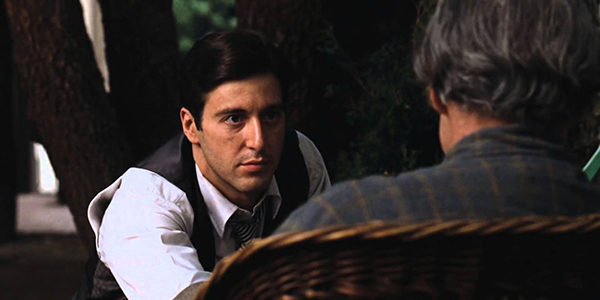
There is a power to Michael Corleone as he transitions from college graduate to a “made” man and Pacino wanted to highlight that transition. When executives at Paramount were getting the dailies they didn’t feel like Pacino was giving any kind of powerful performance. Coppola pushed up the shooting date for the killing of Sollozzo in the hopes that Pacino would deliver a performance the executives would like. It worked and Pacino kept his role.
The Godfather and The Godfather Part II went on to sell millions at the box office and are considered some of the best films in history. Part 3 was released to not such rave reviews, but completed the story of the Corleone family. Al Pacino’s presence in all is integral to the films success. He delivers an understated performance with occasional powerful outbursts. The arc of his character was purposefully constructed and often times subtle. Pacino would later get a reputation of being over to top, but I urge everyone to re watch The Godfather and see how delicate of a delivery Pacino gives.
Serpico (1973)
Pacino followed up The Godfather with Serpico, a film about a real life police officer who goes under cover to expose the corruption within the New York police force. Frank Serpico refused to play by the status quo and finds himself being ostracized from the other police officers. He is often put into dangerous situations because of his obstinate behavior. After being shot while on a drug bust, Serpico decides to go public with the information that he has obtained about the police corruption. He eventually receives a medal of honor and retires to Switzerland.
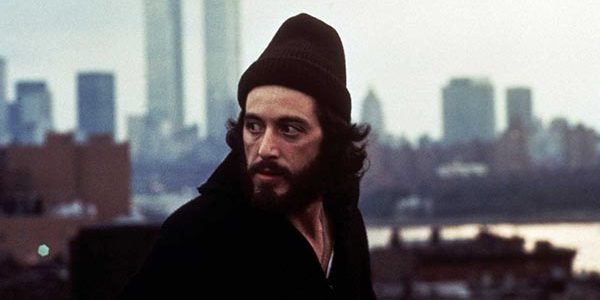
Pacino spent a lot of time with the real Frank Serpico before and during the film shoot. Really immersing himself into this character, Pacino wound up pulling over a truck and attempted to write him up for too much exhaust emission. The film received good reviews, even though the consensus over the real Serpico’s actions was still split. This would be one of many times that Pacino would portray a real person’s story, but one of the only times that he actually meet with person before his portrayal.
In a strange way, the character of Serpico and Pacino have some similarities that might not seem so apparent. Serpico was fighting against the norm in the police force, but Pacino was also fighting for and winning roles in an environment that didn’t seem to give accolades to ethnic looking actors. Although they were completely different fights, both men had to highlight their individuality and speak their truth.
Dog Day Afternoon (1975)
Dog Day Afternoon reunited Al Pacino and John Cazale in a film that was revolutionary for it’s time. Sonny and Sal, played by Pacino and Cazale, attempt to rob a bank so that Sonny’s wife can get money for her sex reassignment surgery. Because they are novices to crime, the robbery goes instantly wrong. They end up holding the bank workers hostage and are eventually surrounded by the police.
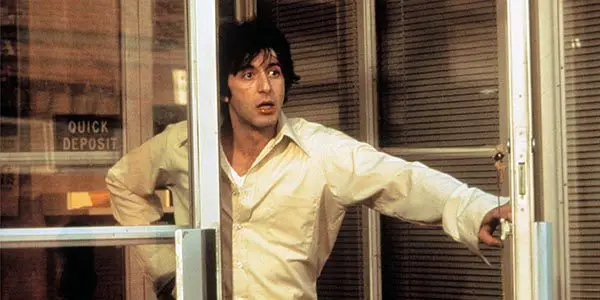
Sonny receives a phone call from Sergeant Moretti who works as a negotiator and attempts to get the hostages free. After a long struggle and complications, the police agree to get a get Sonny and Sal on a plane away from the situation so that the hostages can be freed. Sonny, knowing that this cannot end up well, writes out his will and leaves money to his wife for her surgery and to his ex wife, Angie.
In one of the most infamous scenes of the whole film, Pacino walks out of the bank to address the police. He then begins chanting “Attica” to taunt the police and address the prison riot. This famous scene was a complete improv on Pacino’s part. As he said in a later interview, there was a crowd forming around the set who were getting amped up by what they saw. Someone in the crowd yelled Attica and Pacino overheard and began chanting it. By a complete fluke the use of that chant spoke to a large issue happening in the country pertaining to police and prison conduct. Pacino’s portrayal is erratic and explosive. There are moments of complete mania that can be felt through the screen.
Scarface
Scarface is a perfect example of the power of cinema. When the film was first released it was torn apart for Pacino’s performance, the grotesque nature of the violence portrayed and the over use of a certain “f” word. But now, over thirty years later, the film has a cult following. To be perfectly honest, Pacino’s performance was over the top. But, the whole film was portraying the grandiose nature of the drug business, so his performance matched the tone of the story.
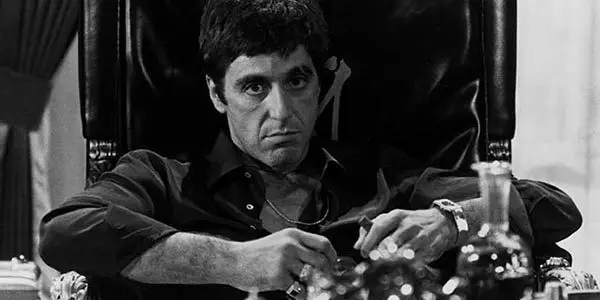
The film chronicles the life of Tony Montana, a Cuban man living in Miami who gets involved with a drug cartel that he ends up running. The film was shot in the 1980’s and foreshadowed how the decade of greed would have it’s consequences. Once Tony gains a little bit of power, he becomes obsessed with getting more. Even when he has it all, it’s not enough.
The infamous final scenes of the film show Pacino behind a desk with a mound of cocaine in front of him. Now, that mound of cocaine was so large it could easily kill a horse, but it symbolizes how having a lot is enough for a person of greed. Tony Montana ends up going down in a shower of bullets, but not before he can utter that famous line: “say hello to my little friend”. In later years, the film who be referenced an quoted on television shows and rap songs; the film even gained an audience through video games.
Angels in America
I have yet to be able to shut up about the brilliance of the HBO miniseries, Angels in America. Directed by Mike Nichols and written by Tony Kushner, this ensemble piece should be taught as a master class in acting. Al Pacino plays real life character Roy Cohn, although the character is based on Tony Kushner’s impression of the man and not necessarily an autobiographical depiction.
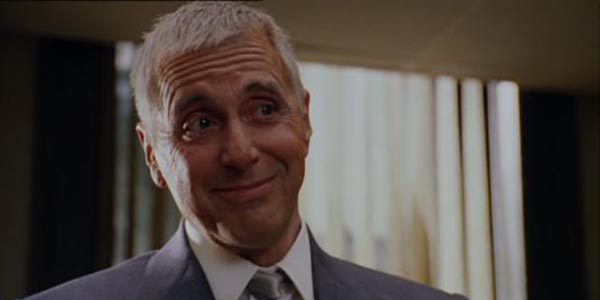
Roy is an infamous attorney known for his corruption who takes a young clerk, Joe Pitt, under his wing. He pressures Joe to go to Washington D.C. to work for the Justice Department to slyly work on Roy’s behalf, as he is about to be disbarred. Pacino, once again, gives a layered performance as he portrays a man losing his power while also losing his life; Cohn is a closeted gay man dying of AIDS.
Pacino’s relationship with HBO continued as he went on to play Jack Kevorkian in the T.V movie You Don’t Know Jack and later Phil Spector in the self titled movie Phil Spector.
Conclusion
It would be quite easy to have an entire class in a film curriculum dedicated to Al Pacino. Just as his generation idolized Brando or Dean, the generations that followed Pacino look to him as the template for great acting. Often times he is overly expressive, but he can be equally brilliant in his subtlety. He has had some dips in his career, but he continues to come back to prove his greatness.
What is your favorite Pacino film? Why do you think he has been able to stand the test of time in this business?
Does content like this matter to you?
Become a Member and support film journalism. Unlock access to all of Film Inquiry`s great articles. Join a community of like-minded readers who are passionate about cinema - get access to our private members Network, give back to independent filmmakers, and more.
Michelle Sabato is an actor and writer from Cleveland, Ohio. By the age of 2 Michelle had memorized all the words to The Wizard of Oz. So, yes, she can carry a conversation with just using movie quotes.













